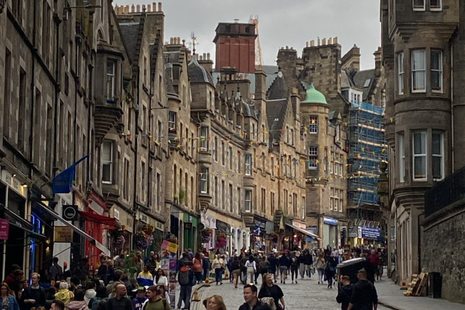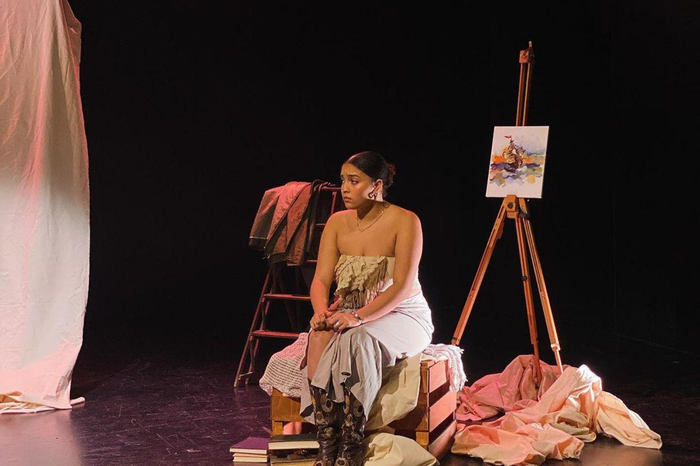The Fringe is a privilege more people need access to
Rising costs make Edinburgh an increasingly unreachable — but no less crucial — launchpad for artists. So what does that mean for equality in theatre?

There are two occasions where being Scottish at Cambridge comes in handy. The first is in conversations about regional divide and access — being from the worst-represented part of Britain, you have a natural perch on the moral high ground. You are not just northern; you are ubernorthern. In Scotland there are no grammar schools, or elite sixth-form colleges. Where I sat my Advanced Highers (no, not everyone does A-levels) I was the first person to reach Cambridge. While my friends defend that only five (!) people from their Surrey grammar school got into Oxbridge in their year, I can bask in smug self-congratulation. One is different. One is unique. One is ‘not like other girls.’
“Toilet-themed superhero improv to a one-woman confessional piece about lesbianism and kink”
The second is the Edinburgh Fringe. I admit, growing up an hour’s train ride away, it took me until I came to Cambridge to really appreciate what I had on my doorstep. And this year, courtesy of being skint and chatting up one of the admins on Niddry Street who snuck me into a bunch of random shows, I enjoyed a greater sample than usual. Back-to-back performances took me from toilet-themed superhero improv to a one-woman confessional piece about lesbianism and kink, without even having to change venue.
Venture further and you’ll find magicians, interactive gigs, sketch shows, VR demos, street performance, puppetry, Shrek-themed burlesque (oh yes) and, naturally, a whole spectrum of stand-up, from established names to up-and-coming acts. My favourite slot is the first week in August, where American theatre schools descend on the same venue to perform their own original musicals. Last year’s Gulls was an adaptation of Chekhov’s The Seagull set in a U.S. high school, with Konstantin reimagined as a quarterback and his mother a swanky, soprano sports MILF. Truly, you can see it all or at least, some of us can.
“As a golden rule, Fringe shows don’t make a profit”
Far be it from me to moan that the largest assembly of cultural capital in Britain takes place outside of London (let alone England). But being so far-flung from where the majority live means that for most, Edinburgh is an expensive outing. Which has the unfortunate side-effect of separating those who have the resources (time, money, know-how) to get there from those who don’t. To experience the Fringe as just an audience member, absorbing it in one intense, motley, artistic osmosis, is precious enough. But to stage your own work there, getting your foot in the door as countless artists — from Monty Python to Paul Daniels — have done before, is as invaluable as it is increasingly inaccessible.
If financial hurdles like venue hire, publicity and accommodation impressed on everyone equally, then the Fringe would play out like a meritocratic footrace — one that rewards shrewd acumen and creative strategy, skills that only become more useful the further you make it in the industry. But we all know it doesn’t turn out like that. It’s those with inexhaustible incomes who can afford hiring expenses, afford longer production runs — and, crucially, afford to make a loss. As a golden rule, Fringe shows don’t make a profit: in this alone, it disadvantages those who need to proactively make money. But what was always an embedded inequality has now been exacerbated by the effects of the pandemic.
“Fringe expenses have shot up, and they show no signs of climbing down”
Fringe expenses have shot up, and they show no signs of climbing down. Cambridge is lucky enough to fund flagship productions from CUADC and CUMTS each year. But as a sign of the times, even these are leaning increasingly on donations. And if you’re not involved in either show? Prepare to empty your coffers (or if you’re lucky enough, your parents’) to head up north. Post-Covid, not only are the chances of running a loss at the Fringe higher, but so is the amount you stand to lose. For most people, this now outweighs what they can expect to gain. For all the enrichment and exposure the Fringe offers, there’s simply too much at stake. In the trek to Edinburgh, the haves leave the have-nots trailing in the dust.
Which is a shame because, though its accessibility has taken a hit, the Fringe’s spotlight has rebounded at a far quicker rate. Fleabag began in Edinburgh, as did Netflix’s Baby Reindeer, which may well scoop the top prize at the Emmys in a few days. In its aftermath, talent scouts are racing to land the next break-out sensation. And what will they find? For now, only those wealthy or initiated enough to sustain the voyage to Edinburgh. And that is not an effective indicator of talent in Britain — just those who can afford to display it.
This is bad for egalitarian reasons, sure, but it’s also bad for theatre. The Fringe is liberating because it embraces the bizarre and experimental - the fringe (not to put too fine a point on it): concepts and visions that couldn’t operate as large-scale ventures. In these parameters, people are free to pursue their own wacky, idiosyncratic end goals. The more exclusive the Fringe becomes, the more it loses its essence, which allows artists to bounce off one another’s unabashed creativity. The more it begins to resemble the city ensconcing it: cold, grim and reserved — in the festival’s case, for the wealthy few.
 Features / Should I stay or should I go? Cambridge students and alumni reflect on how their memories stay with them15 December 2025
Features / Should I stay or should I go? Cambridge students and alumni reflect on how their memories stay with them15 December 2025 News / Cambridge study finds students learn better with notes than AI13 December 2025
News / Cambridge study finds students learn better with notes than AI13 December 2025 News / Dons warn PM about Vet School closure16 December 2025
News / Dons warn PM about Vet School closure16 December 2025 News / News In Brief: Michaelmas marriages, monogamous mammals, and messaging manipulation15 December 2025
News / News In Brief: Michaelmas marriages, monogamous mammals, and messaging manipulation15 December 2025 Comment / The magic of an eight-week term15 December 2025
Comment / The magic of an eight-week term15 December 2025









